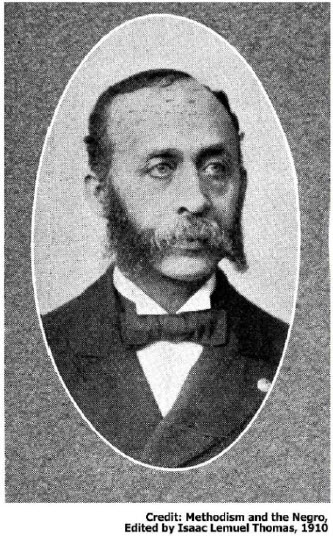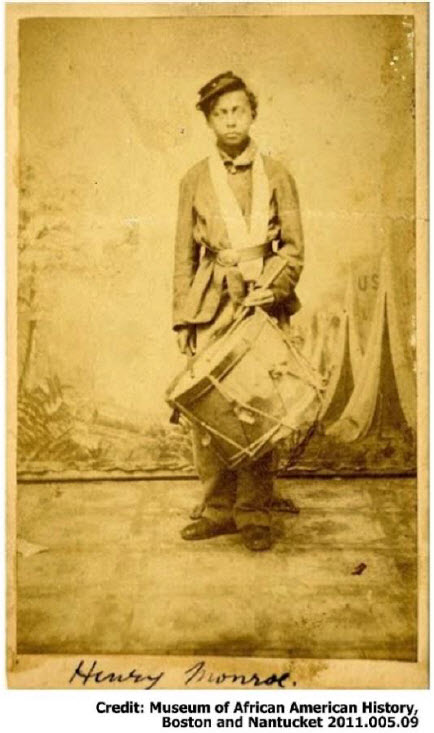A Wilmington, Del. newspaper published an article the last week of August 1886 that said a local minister turned down an opportunity to return to his roots as an educator and lead a new Methodist Episcopal Church-supported prep school about to open in Princess Anne, Md.

“The Rev. H.A. Monroe, pastor of Ezion M.E. Church, this city, was offered the presidency,” reported the Delaware Gazette & State Journal, citing no source. “Not wishing to quit the ministry, he declined it, although his finances would have been considerably bettered by making the change1.”
The weekly broadsheet said Benjamin O. Bird, a faculty member of Baltimore’s Centenary Baptist Institute, instead would convert a “large brick mansion on 16 acres of land,” into an institution where young Black men could study to be ministers and Black women could prepare to become teachers. The Delaware Conference Academy opened Sept. 13, 1886.
In the summer of 1886, Henry Augustus Monroe was a 36-year-old Civil War veteran who had served in the 54th Massachusetts regiment2 alongside two of abolitionist Frederick Douglass’ sons.
Born Sept. 3, 1849 in New Bedford, Mass., he was an adolescent drummer in the all-Black unit immortalized by the 1989 Hollywood film “Glory.”
Civil War armies utilized drummers to bang out messages across battlefields over the din of weapon fire, which in turn made them vulnerable to snipers.
Monroe survived and mustered out a month shy of his 16th birthday. A bright student who composed poetry about his battlefield experiences, Monroe returned to New England to finish his education and accepted a position with the Freedmen’s Bureau3. In the late 1860s, he was sent 23 miles south of the Mason-Dixon Line to organize formal public schooling for Blacks in Somerset County, Md.
“Where at much risk of life and sacrifice of personal comfort,” the Cleveland Gazette newspaper said of Monroe, “he succeeded in releasing fourteen minors from their bondage under the infamous ‘Apprentice law’ of the state4.”
Monroe also worked as a customs inspector in Baltimore.
By 1880, Monroe and his wife, the former Christiana A. Wilson, had six children and were living in Upper Fairmount west of Princess Anne, where the U.S. census listed his occupation as “publisher of paper5.” That summer, he agreed to sell his 500-subscriber Standard Bearer newspaper to the Methodist Episcopal Church to serve as the Delaware Conference’s newsletter – and also was voted a full membership in the conference clergy as well 6.

As Ezion’s pastor in the mid-1880s, Monroe oversaw restoration of a church damaged by a fire; it earned him a transfer in 1887 to lead St. Mark’s, a prominent Methodist Episcopal Church in New York City.
He pastored churches across the lower Eastern Shore and as far north as New York, where in May 1888 his wife succumbed to what was believed to be tuberculosis. He went on to be recognized as a respected church elder.
Throughout the 1890s, the annual Morgan College catalog included Monroe’s name as a member of the institution’s trustee board and in the 1897-98 edition listed him as one of five presiding elders of the Delaware Conference advisory board in the section for Princess Anne Academy. The name of Rev. Joseph R. Waters, widely acknowledged for his role in Princess Anne Academy’s founding, is two lines below Monroe’s on page 32.
When Monroe died July 16, 1912 in Philadelphia, the New York Age newspaper described him as “a prominent figure in the Methodist Episcopal Church for the past thirty-five years 7.”
The following spring, a church conference yearbook included a tribute penned by the Rev. James H. Scott, who called him “an apostle of industry, intelligence and integrity (who) has fulfilled his mission8.”
Neither publication, however, mentioned Monroe had been considered a candidate to lead a historically Black, co-educational institution in Princess Anne that evolved into the University of Maryland Eastern Shore.
“He was a lover of his race,” Scott wrote. “He gave the best he had for them. He set an example of devotion to duty and self-sacrificing. He fought for their freedom. Ever vigilant, he was quick to discern and resent anything that looked like discrimination and oppression.”
Indeed, Monroe had been among a delegation of influential New Yorkers that traveled to Washington in April 1892 to raise concerns with President Benjamin Harrison about indifference to lynchings of “colored people” in the South 9.
Monroe’s final resting place is a family plot in Mount Zion Cemetery, Wilmington, Del. He was 62.
- Delaware Gazette & State Journal, Aug. 26, 1886, pg. 3.
- Massachusetts Historical Society; “Henry A. Monroe, Musician.”
- New England Historical Society; “Henry Monroe, African-American Drummer Boy, Faces Enemy Fire On the Civil War Battlefield;” May 13, 2014.
- Cleveland Gazette, Dec. 5, 1891, pg.1.
- U.S. Census, Fairmount, Md., June 9, 1880.
- 1880 Delaware Annual Conference of the Methodist Episcopal Church minutes; pgs. 25-26.
- New York Age, July 18, 1912, pg. 2.
- Methodist Episcopal Church – Delaware Conference yearbook, April 1913, pgs. 108-110.
- The Washington Bee, April 23, 1892, pg. 2

